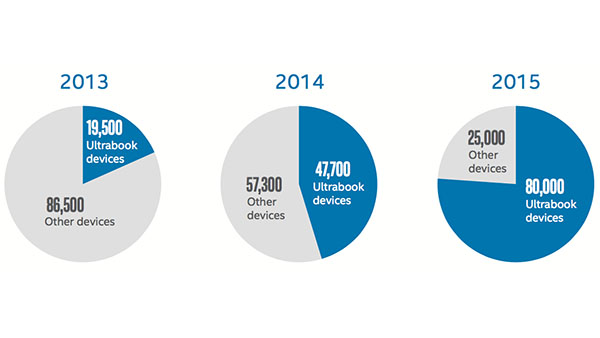Enterprise Ultrabook Devices Move Into the Mainstream at Intel

IT Best Practices: Intel employees have come to expect a certain level of convenience from their devices, and Intel IT must meet this expectation without compromising security and manageability. After evaluating a variety of mobile computing devices, Intel IT began offering enterprise Ultrabook devices as part of our standard hardware refresh program in 2012. Of our nearly 105,000 computing devices at the time, approximately 10 percent were Ultrabook devices. Employees have increasingly selected these devices—which function as both laptop and tablet—over traditional laptops. By 2015, approximately 76 percent were using Ultrabook devices. We’ve also seen an increase in overall employee satisfaction with their devices.
The enterprise Ultrabook devices Intel IT deploys meet our requirements for remote management, durability, reliability, connectivity, security, peripheral device support, and warranty support.
To determine which devices are best suited for employee productivity and business requirements, we evaluate consumer and business—or enterprise—Ultrabook devices. We consider the following:
- Integration. Devices have to integrate into our standard purchasing, support, and deployment process, as well as meet our enterprise requirements for connectivity and security.
- Use. Devices have to meet the expectations of highly mobile users without compromising integration.
We find that enterprise Ultrabook devices consistently meet our requirements. With the increasing availability of touch-enabled applications—in fact, with the trend toward applications that require touch capabilities—we accelerated our PC refresh program to avoid a potential decrease in productivity. Enterprise Ultrabook devices can handle our daily workloads and security requirements while also meeting employee expectations for convenience and productivity
For more information on Intel IT Best Practices, please visit intel.com/IT
Posted in:
Intel, Intel IT, IT White Papers, IT@Intel

